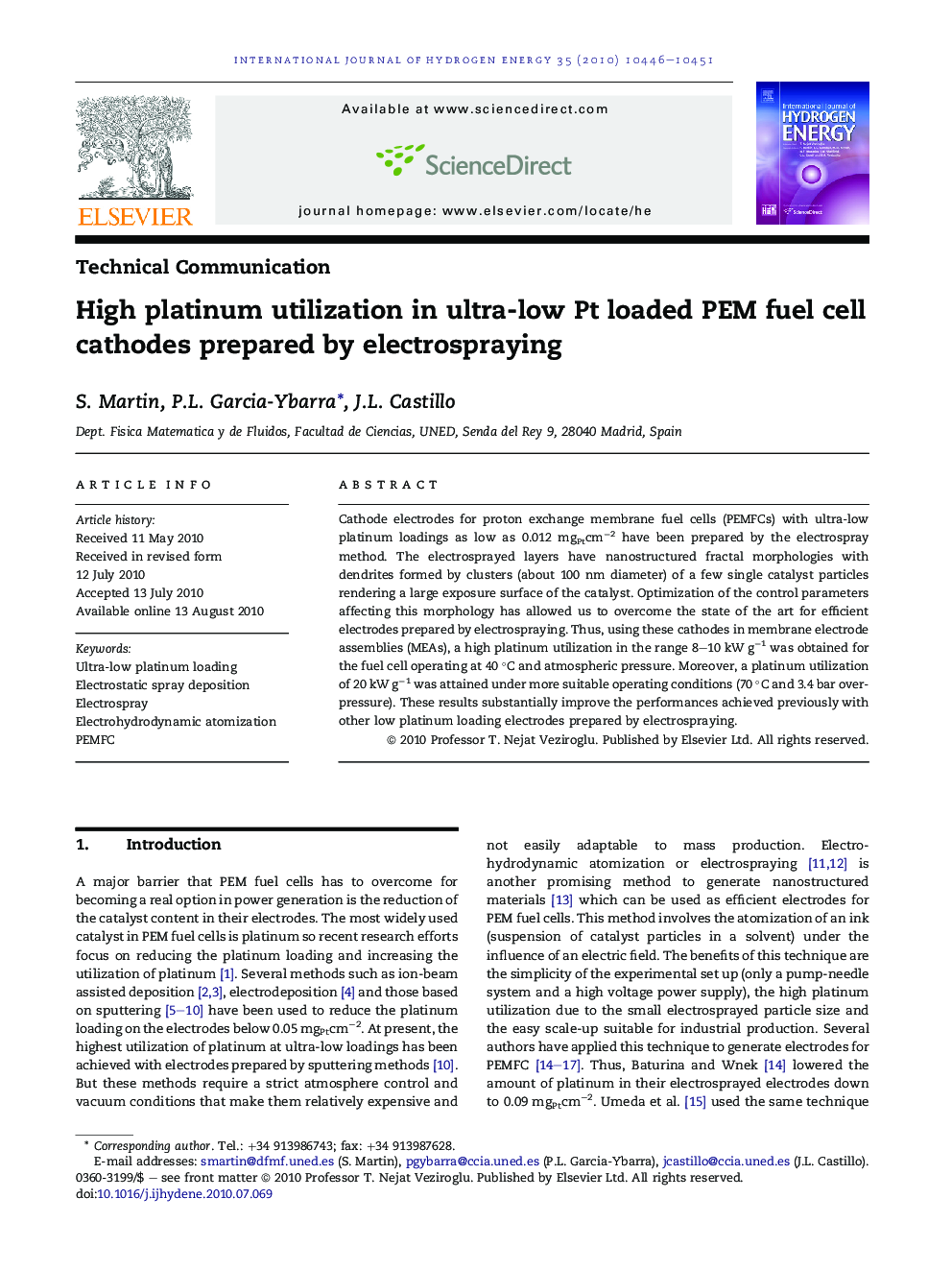| Article ID | Journal | Published Year | Pages | File Type |
|---|---|---|---|---|
| 1280104 | International Journal of Hydrogen Energy | 2010 | 6 Pages |
Cathode electrodes for proton exchange membrane fuel cells (PEMFCs) with ultra-low platinum loadings as low as 0.012 mgPtcm−2 have been prepared by the electrospray method. The electrosprayed layers have nanostructured fractal morphologies with dendrites formed by clusters (about 100 nm diameter) of a few single catalyst particles rendering a large exposure surface of the catalyst. Optimization of the control parameters affecting this morphology has allowed us to overcome the state of the art for efficient electrodes prepared by electrospraying. Thus, using these cathodes in membrane electrode assemblies (MEAs), a high platinum utilization in the range 8–10 kW g−1 was obtained for the fuel cell operating at 40 °C and atmospheric pressure. Moreover, a platinum utilization of 20 kW g−1 was attained under more suitable operating conditions (70 °C and 3.4 bar over-pressure). These results substantially improve the performances achieved previously with other low platinum loading electrodes prepared by electrospraying.
